Optimizing Energy Management in Microgrids Based on Different Load Types in Smart Buildings
Abstract
1. Introduction
- A new method based on the load model of buildings in a microgrid is presented. The method is based on the Stackelberg game model between microgrids and consumers;
- A demand response approach is developed to increase the consumption during light load conditions and reduce the amount of peak load regarding the amount of energy consumption and the price of the network;
- Energy management and exchange in each microgrid and between the microgrid cluster agents are written as linear equations according to the principles of linearization. This issue helps to reduce the calculations and results in the global equilibrium point.
2. Model Description
2.1. Microgrid Cluster Agent Model
2.2. Microgrid Agent Model
2.3. User or Consumer Agent Model
3. Load Model
4. Game Model
- (1)
- In the first layer, the microgrid cluster determines the purchase and sale prices of energy for each microgrid. Then, the microgrids determine their buying and selling power to get the most profit, and balance the power according to the prices.
- (2)
- In the second layer, each microgrid determines the prosumer’s energy to consumers based on the demand of consumers and consumption history. The consumers change their consumption power by using demand response to achieve maximum profit according to the prices.
5. Simulation Results
- (a)
- The consumer agent is based on a fixed coefficient of the total load response;
- (b)
- The consumer agent can change its energy consumption based on the type of load, the price of the load, and load response.
5.1. Model 1
5.2. Model 2
6. Conclusions
Author Contributions
Funding
Data Availability Statement
Conflicts of Interest
References
- Zhao, Z.; Guo, J.; Luo, X.; Lai, C.S.; Yang, P.; Lai, L.L.; Li, P.; Guerrero, J.M.; Shahid, M. Distributed robust model predictive control-based energy management strategy for islanded multi-microgrids considering uncertainty. IEEE Trans. Smart Grid 2022, 13, 2107–2120. [Google Scholar] [CrossRef]
- Wang, K.; Li, H.; Maharjan, S.; Zhang, Y.; Guo, S. Green energy scheduling for demand side management in the smart grid. IEEE Trans. Green Commun. Netw. 2018, 2, 596–611. [Google Scholar] [CrossRef]
- Hong, Y.-Y.; Alano, F.I. Hierarchical Energy Management in Islanded Networked Microgrids. IEEE Access 2022, 10, 8121–8132. [Google Scholar] [CrossRef]
- Chiu, W.-Y.; Sun, H.; Poor, H.V. A multiobjective approach to multimicrogrid system design. IEEE Trans. Smart Grid 2015, 6, 2263–2272. [Google Scholar] [CrossRef]
- Dong, X.; Li, X.; Cheng, S. Energy management optimization of microgrid cluster based on multi-agent-system and hierarchical Stackelberg game theory. IEEE Access 2020, 8, 206183–206197. [Google Scholar] [CrossRef]
- Han, Y.; Zhang, K.; Li, H.; Coelho, E.A.A.; Guerrero, J.M. MAS-based distributed coordinated control and optimization in microgrid and microgrid clusters: A comprehensive overview. IEEE Trans. Power Electron. 2017, 33, 6488–6508. [Google Scholar] [CrossRef]
- Cao, Z.; Han, Y.; Wang, J.; Zhao, Q. Two-stage energy generation schedule market rolling optimisation of highly wind power penetrated microgrids. Int. J. Electr. Power Energy Syst. 2019, 112, 12–27. [Google Scholar] [CrossRef]
- Wang, X.; Zhang, Y.; Zhang, S.; Li, X.; Wu, L. Equilibrium analysis of electricity markets with microgrids based on distributed algorithm. IEEE Access 2019, 7, 119823–119834. [Google Scholar] [CrossRef]
- Xu, Y.; Liu, W. Novel multiagent based load restoration algorithm for microgrids. IEEE Trans. Smart Grid 2011, 2, 152–161. [Google Scholar] [CrossRef]
- Rui, T.; Li, G.; Wang, Q.; Hu, C.; Shen, W.; Xu, B. Hierarchical optimization method for energy scheduling of multiple microgrids. Appl. Sci. 2019, 9, 624. [Google Scholar] [CrossRef]
- Lee, J.; Guo, J.; Choi, J.K.; Zukerman, M. Distributed energy trading in microgrids: A game-theoretic model and its equilibrium analysis. IEEE Trans. Ind. Electron. 2015, 62, 3524–3533. [Google Scholar] [CrossRef]
- Maharjan, S.; Zhu, Q.; Zhang, Y.; Gjessing, S.; Başar, T. Demand response management in the smart grid in a large population regime. IEEE Trans. Smart Grid 2015, 7, 189–199. [Google Scholar] [CrossRef]
- Anoh, K.; Maharjan, S.; Ikpehai, A.; Zhang, Y.; Adebisi, B. Energy peer-to-peer trading in virtual microgrids in smart grids: A game-theoretic approach. IEEE Trans. Smart Grid 2019, 11, 1264–1275. [Google Scholar] [CrossRef]
- Lin, K.; Wu, J.; Liu, D.; Li, D.; Gong, T. Energy management optimization of micro energy grid based on hierarchical Stackelberg game theory. Power Syst. Technol. 2019, 43, 973–981. [Google Scholar]
- Liu, Y.; Guo, L.; Wang, C. A robust operation-based scheduling optimization for smart distribution networks with multi-microgrids. Appl. Energy 2018, 228, 130–140. [Google Scholar] [CrossRef]
- Fu, Y.; Zhang, Z.; Li, Z.; Mi, Y. Energy management for hybrid AC/DC distribution system with microgrid clusters using non-cooperative game theory and robust optimization. IEEE Trans. Smart Grid 2019, 11, 1510–1525. [Google Scholar] [CrossRef]
- Lin, K.; Wu, J.; Liu, D.; Li, D.; Gong, T. Energy management of combined cooling, heating and power micro energy grid based on leader-follower game theory. Energies 2018, 11, 647. [Google Scholar] [CrossRef]
- Wang, J.; Feng, C.; Xu, Y.; Wen, F.; Zhang, L.; Xu, C.; Salam, M. Stackelberg game-based energy management for a microgrid with commercial buildings considering correlated weather uncertainties. IET Gener. Transm. Distrib. 2019, 13, 2102–2111. [Google Scholar] [CrossRef]
- Fallah, S.N.; Deo, R.C.; Shojafar, M.; Conti, M.; Shamshirband, S. Computational intelligence approaches for energy load forecasting in smart energy management grids: State of the art, future challenges, and research directions. Energies 2018, 11, 596. [Google Scholar] [CrossRef]
- Taherian, H.; Aghaebrahimi, M.R.; Baringo, L.; Goldani, S.R. Optimal dynamic pricing for an electricity retailer in the price-responsive environment of smart grid. Int. J. Electr. Power Energy Syst. 2021, 130, 107004. [Google Scholar] [CrossRef]
- Nandish, B.M.; Pushparajesh, V. Simulation of Household Appliances with Energy Disaggrigation using Deep Learning Technique. In Proceedings of the 2021 International Conference on Computational Performance Evaluation (ComPE), Shillong, India, 1–3 December 2021; pp. 173–178. [Google Scholar]
- Bian, Y.; Zheng, N.; Zheng, Y.; Xu, B.; Shi, Y. Demand response model identification and behavior forecast with OptNet: A gradient-based approach. In Proceedings of the Thirteenth ACM International Conference on Future Energy Systems, Online, 28 June–1 July 2022; pp. 418–429. [Google Scholar]
- Logenthiran, T.; Srinivasan, D.; Shun, T.Z. Demand side management in smart grid using heuristic optimization. IEEE Trans. Smart Grid 2012, 3, 1244–1252. [Google Scholar] [CrossRef]
- Tostado-Véliz, M.; Kamel, S.; Aymen, F.; Jordehi, A.R.; Jurado, F. A Stochastic-IGDT model for energy management in isolated microgrids considering failures and demand response. Appl. Energy 2022, 317, 119162. [Google Scholar] [CrossRef]
- Muqeet, H.A.; Munir, H.M.; Javed, H.; Shahzad, M.; Jamil, M.; Guerrero, J.M. An energy management system of campus microgrids: State-of-the-art and future challenges. Energies 2021, 14, 6525. [Google Scholar] [CrossRef]
- Ullah, Z.; Wang, S.; Wu, G.; Xiao, M.; Lai, J.; Elkadeem, M.R. Advanced energy management strategy for microgrid using real-time monitoring interface. J. Energy Storage 2022, 52, 104814. [Google Scholar] [CrossRef]
- Geng, L.; Wei, Y.; Lu, Z.; Yang, Y. A novel model for home energy management system based on Internet of Things. In Proceedings of the 2016 IEEE International Conference on Power and Renewable Energy (ICPRE), Shanghai, China, 21–23 October 2016; pp. 474–480. [Google Scholar]
- Guo, X.-C.; Liao, C.-S.; Chu, C.-C. Multi-objective power management on smart grid. In Proceedings of the 2014 IEEE 18th International Conference on Computer Supported Cooperative Work in Design (CSCWD), Hsinchu, Taiwan, 21–23 May 2014; pp. 733–737. [Google Scholar]
- Farkhani, J.S.; Zareein, M.; Najafi, A.; Melicio, R.; Rodrigues, E.M.G. The power system and microgrid protection—A Review. Appl. Sci. 2020, 10, 8271. [Google Scholar] [CrossRef]
- Wang, X.; Mao, X.; Khodaei, H. A multi-objective home energy management system based on internet of things and optimization algorithms. J. Build. Eng. 2021, 33, 101603. [Google Scholar] [CrossRef]
- Tipasri, W.; Suksri, A.; Velmurugan, K.; Wongwuttanasatian, T. Energy Management for an Air Conditioning System Using a Storage Device to Reduce the On-Peak Power Consumption. Energies 2022, 15, 8940. [Google Scholar] [CrossRef]
- Powroźnik, P.; Szcześniak, P.; Sobolewski, Ł.; Piotrowski, K. Novel Functionalities of Smart Home Devices for the Elastic Energy Management Algorithm. Energies 2022, 15, 8632. [Google Scholar] [CrossRef]
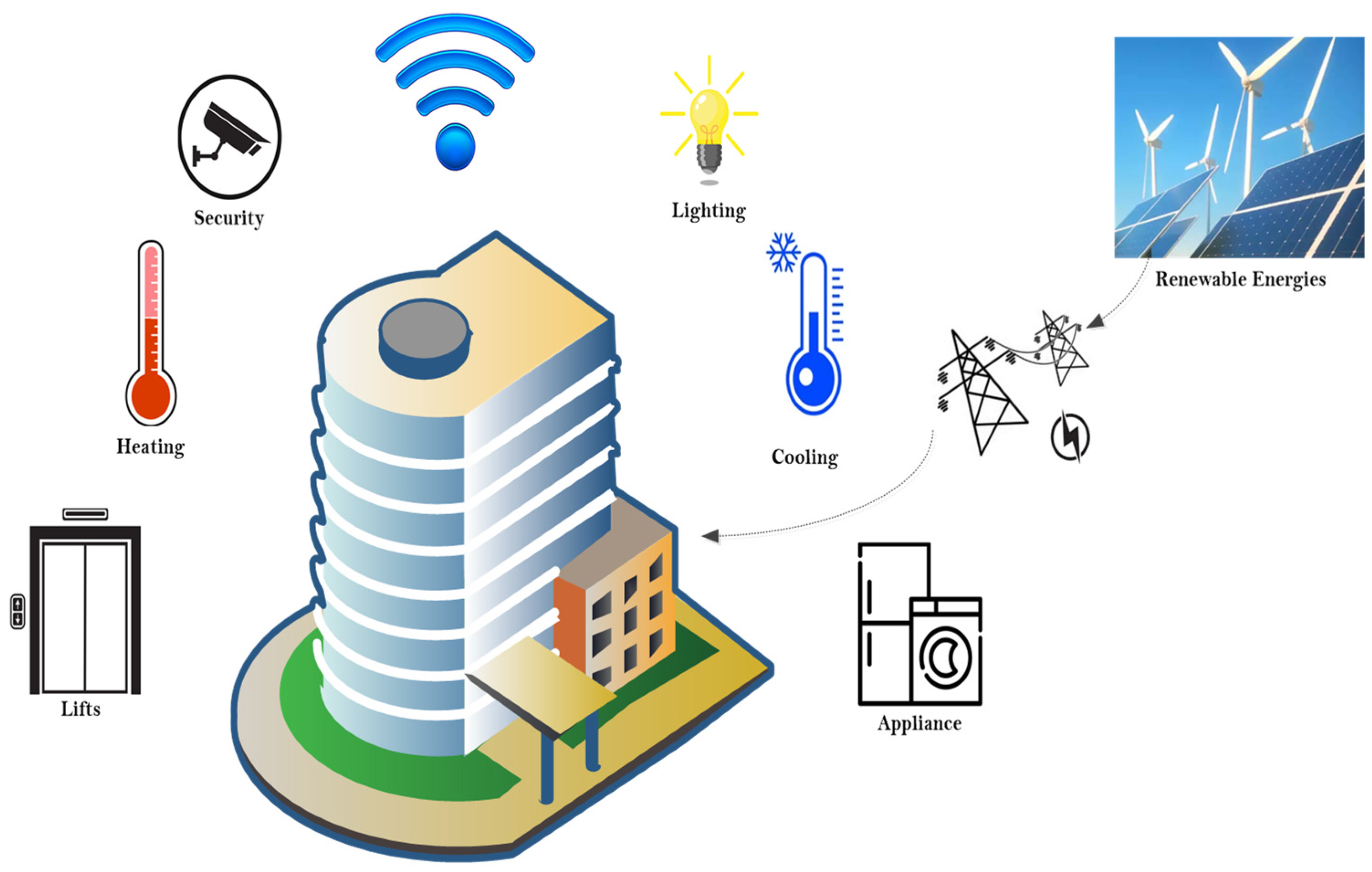

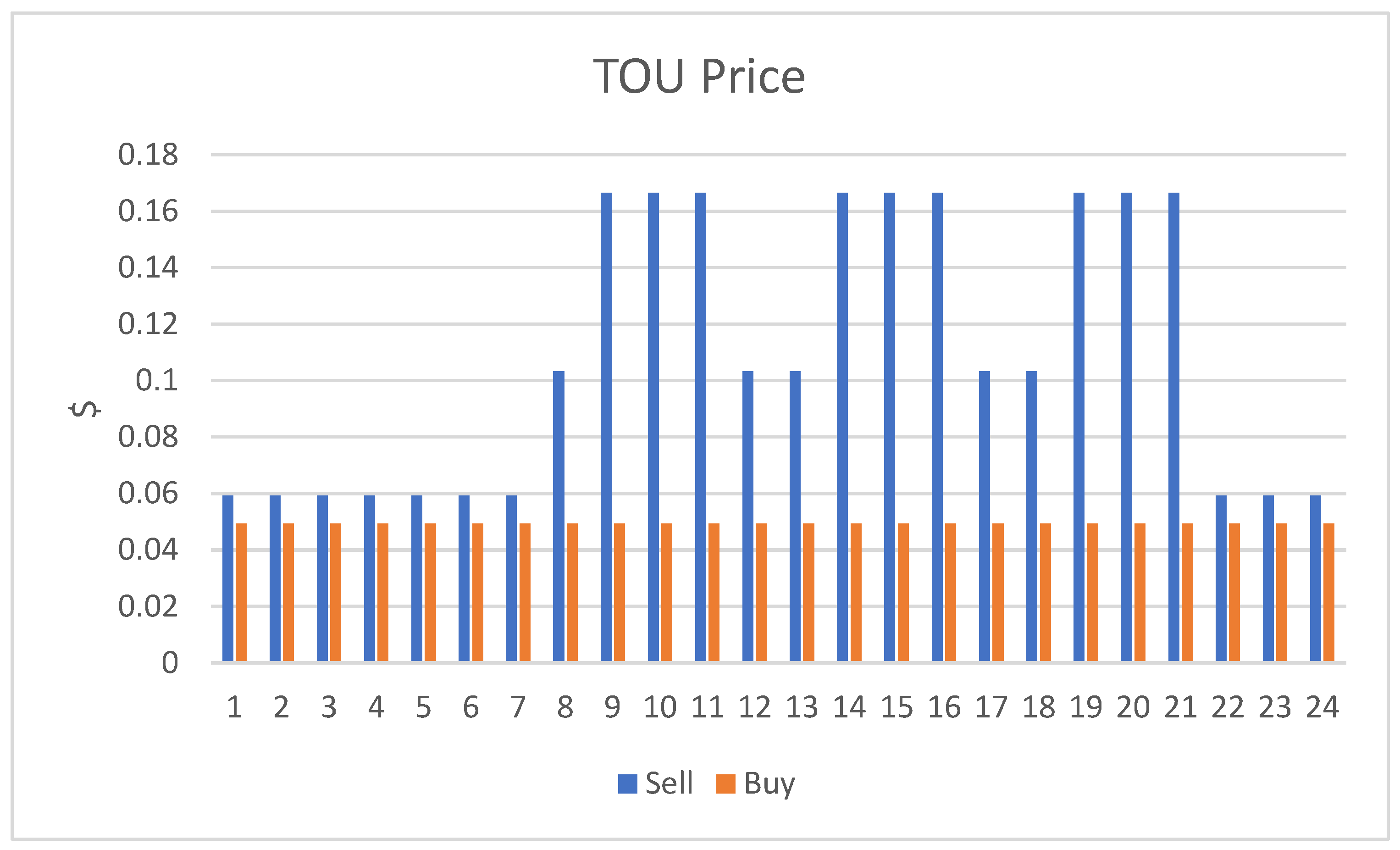
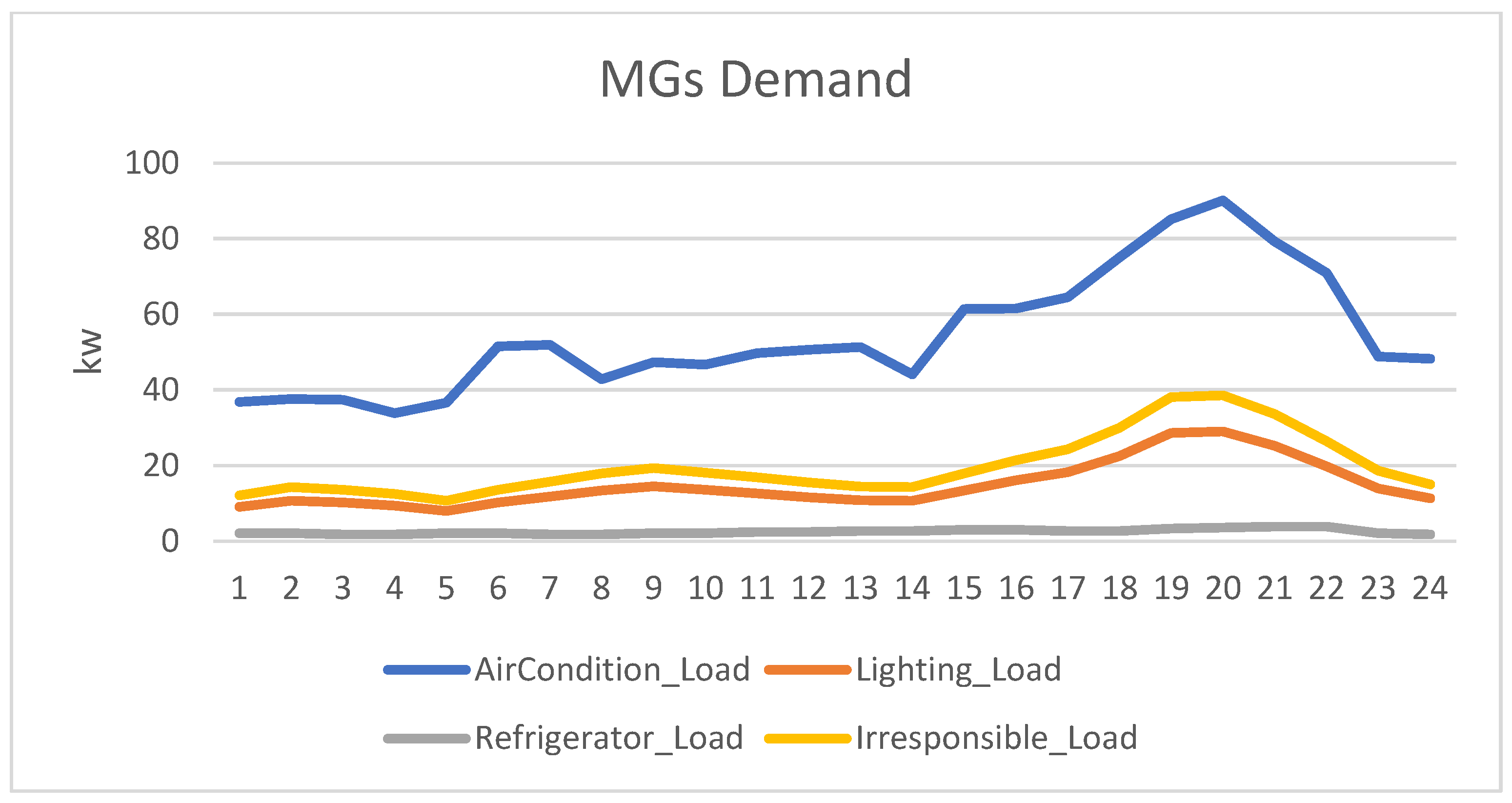
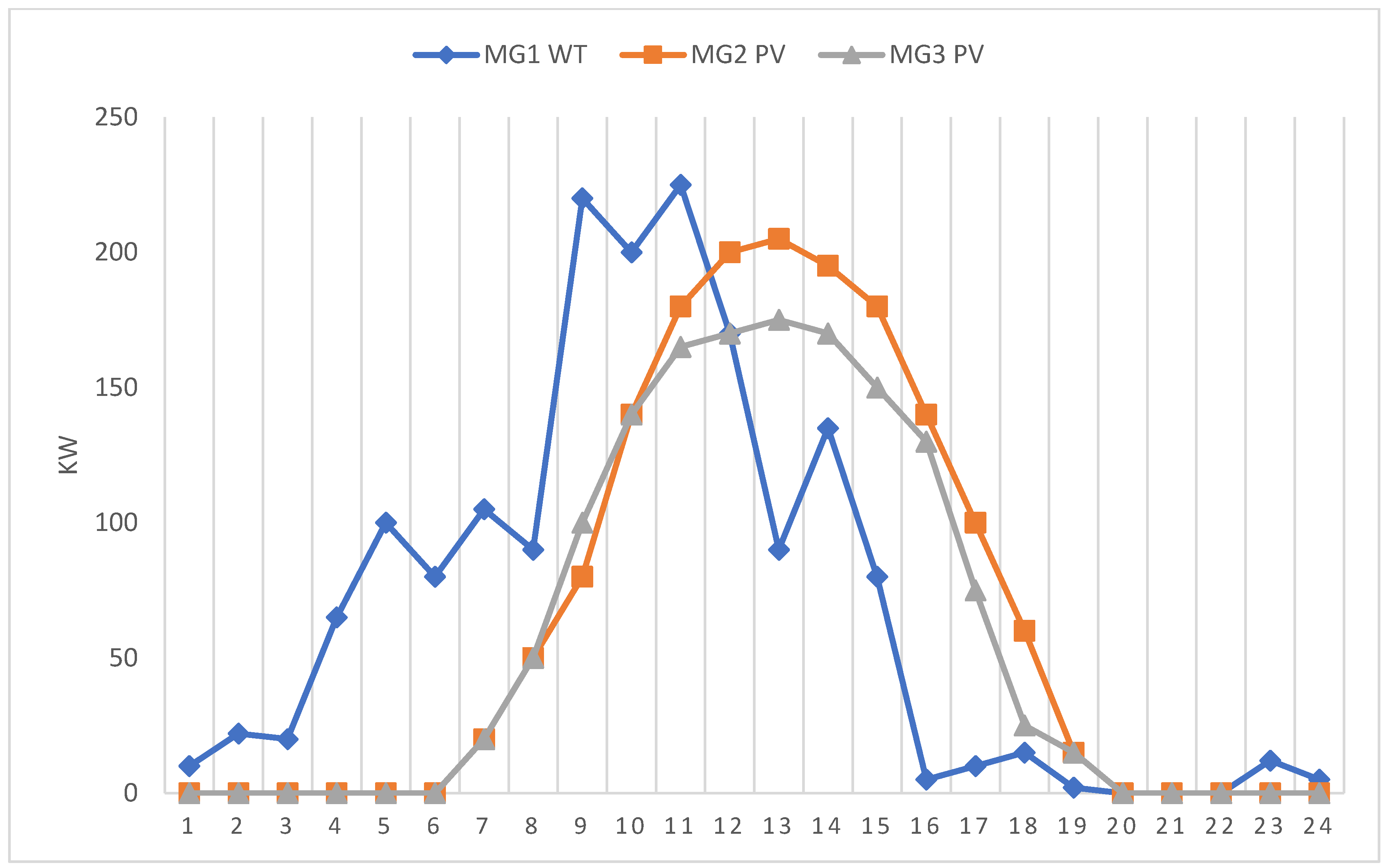
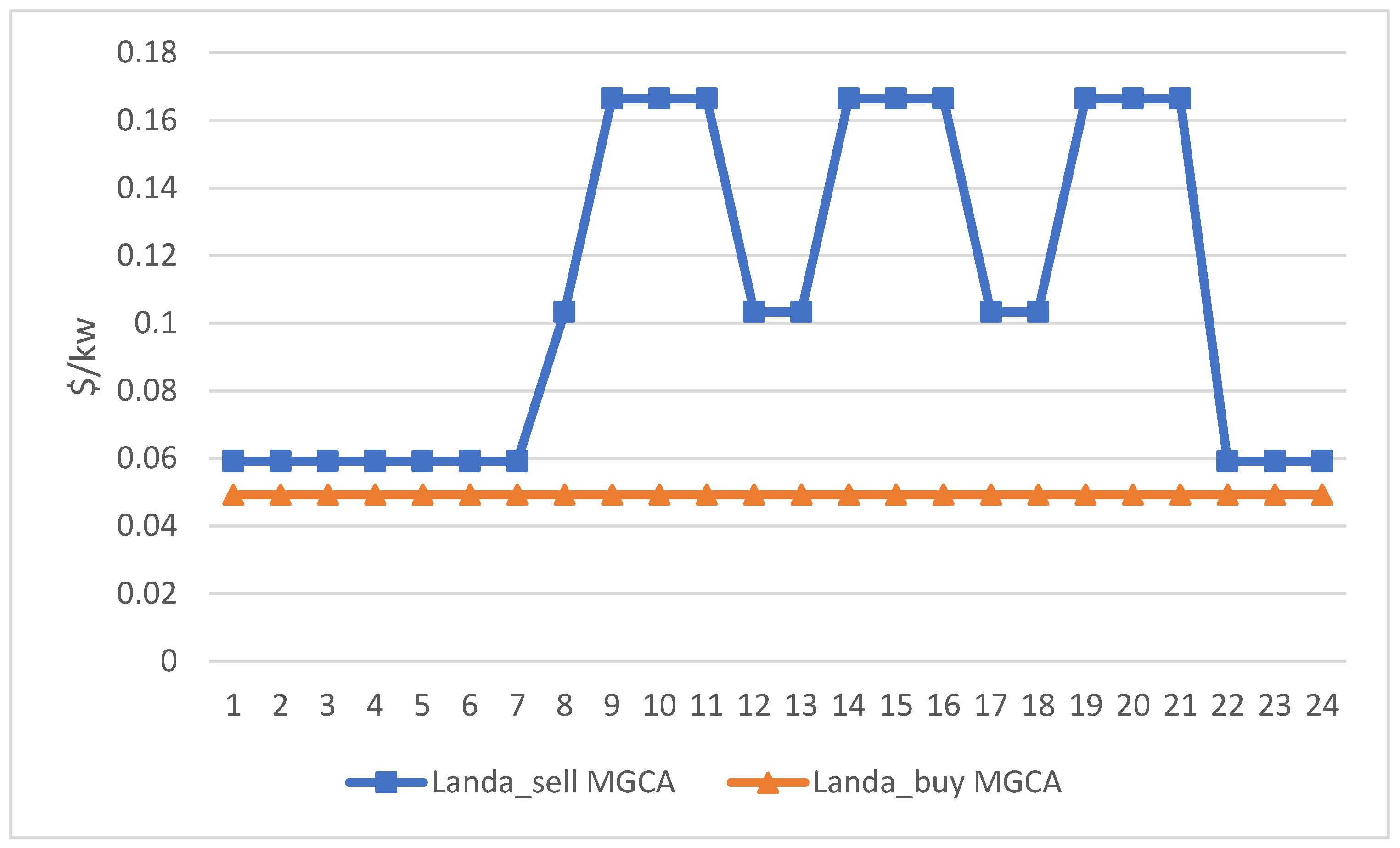
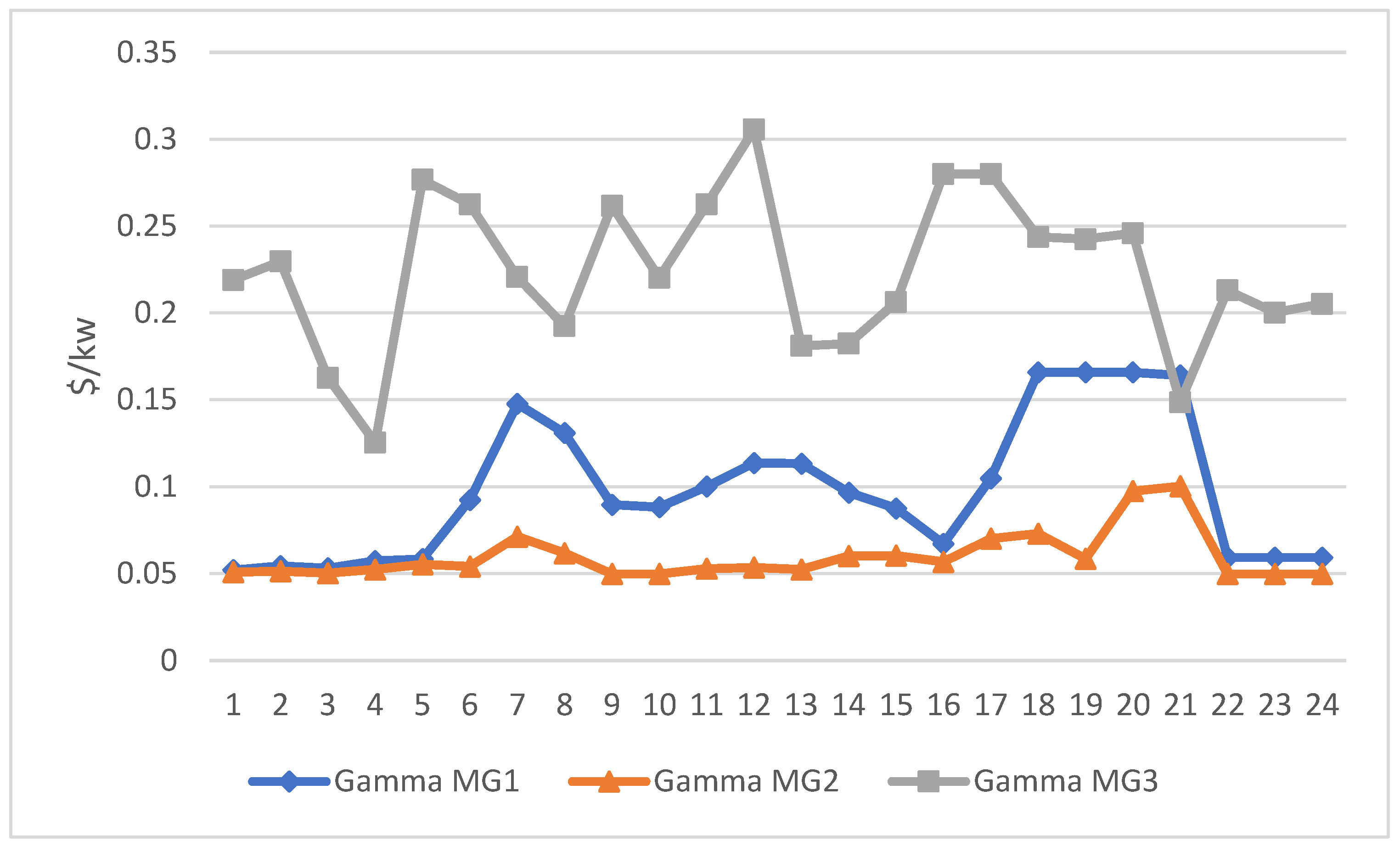
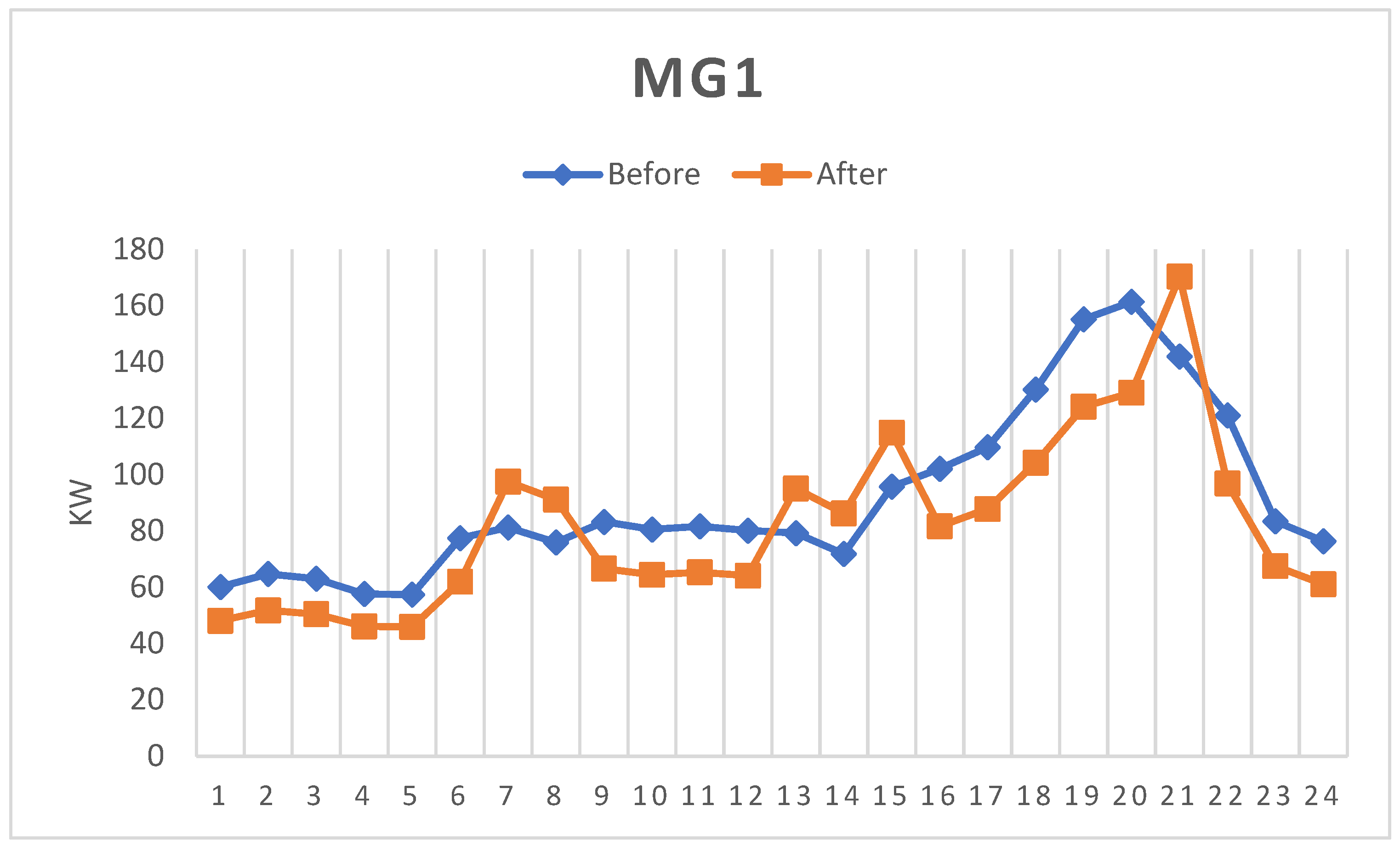
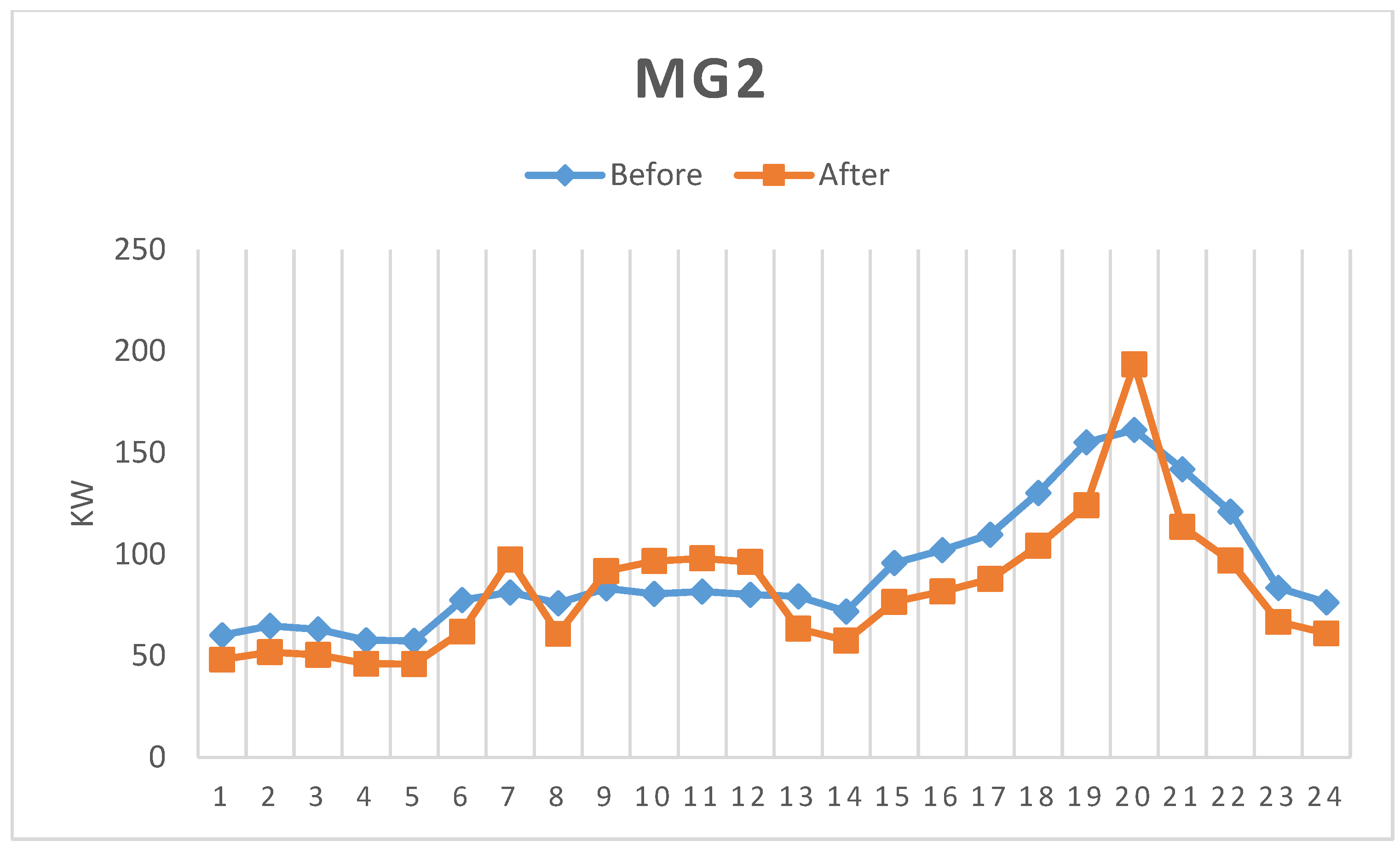

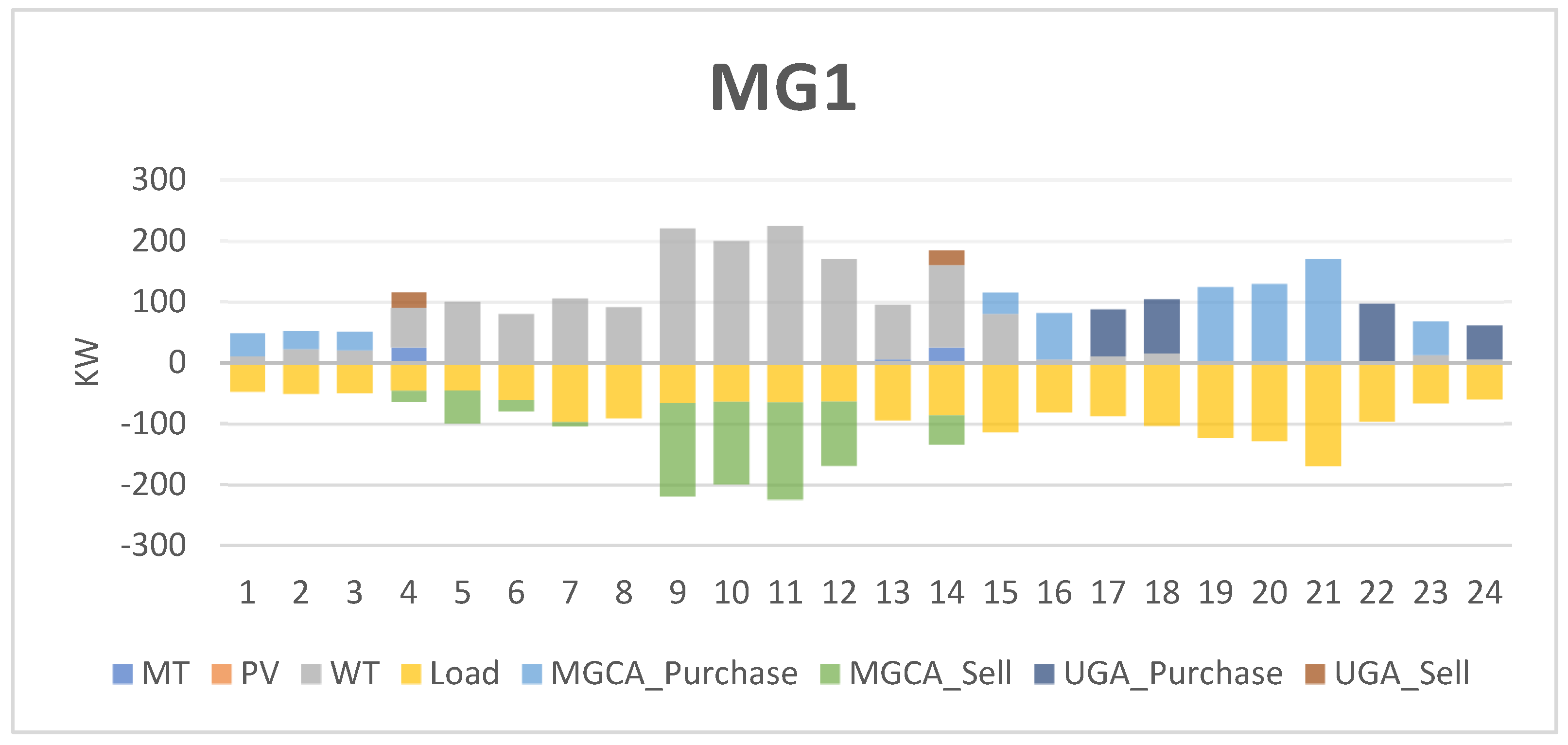
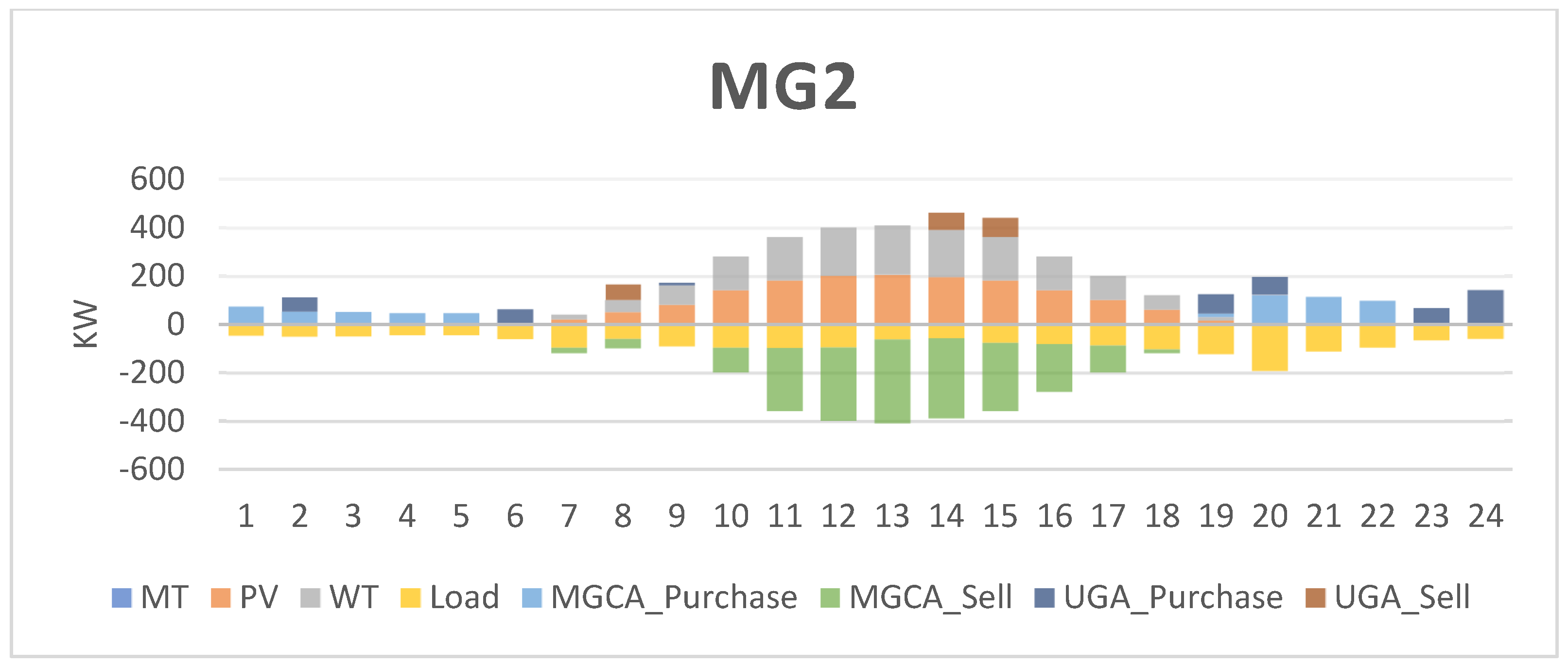
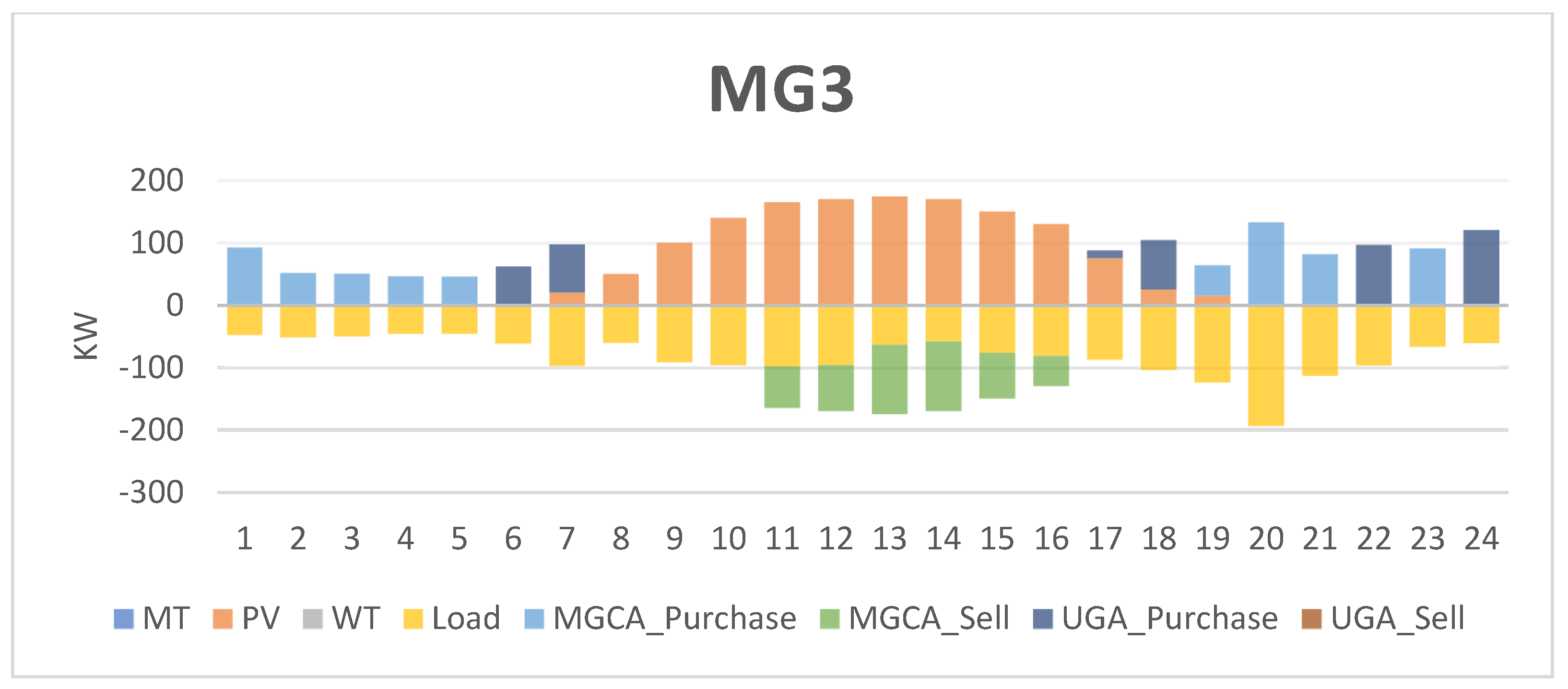
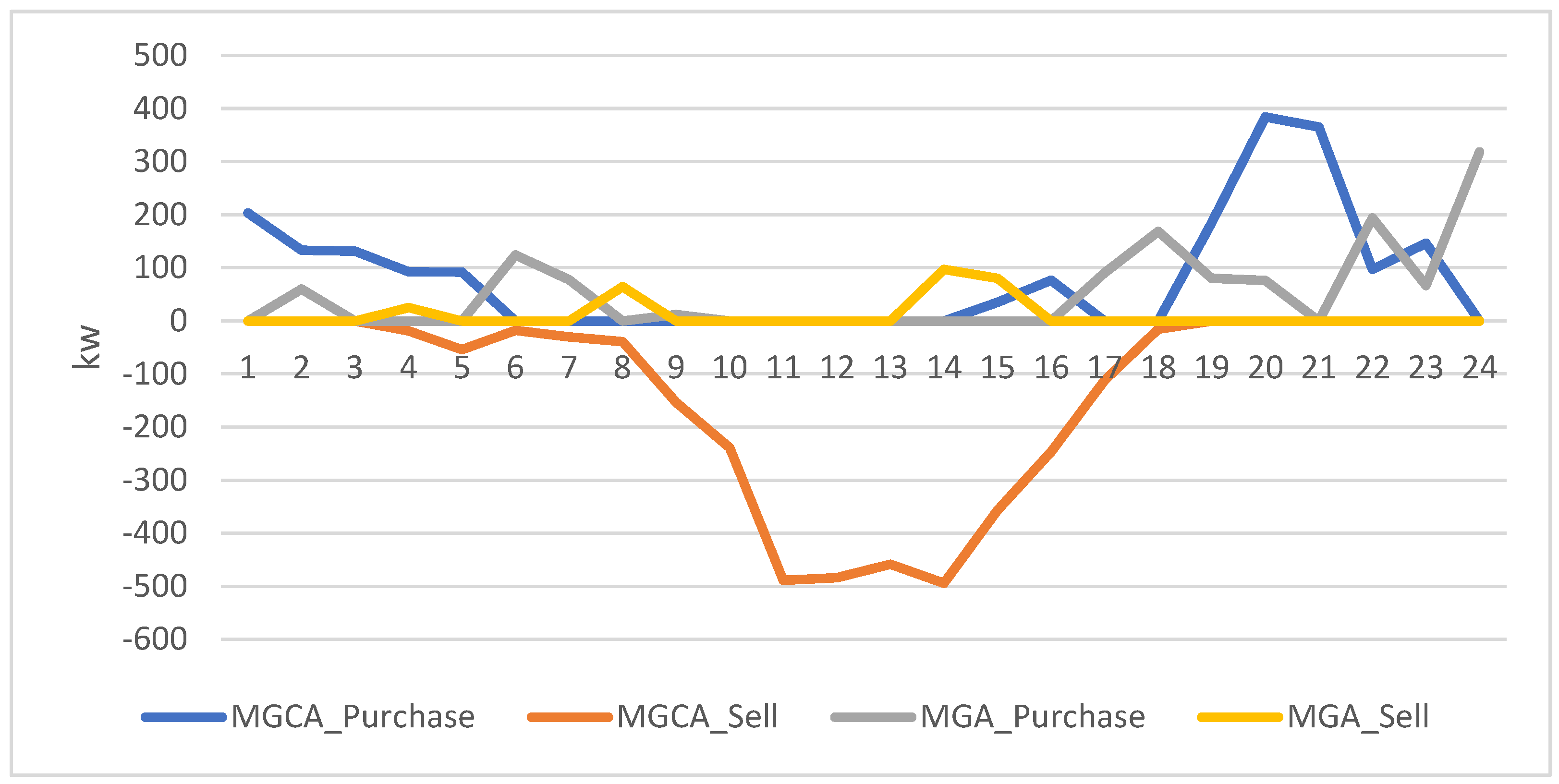
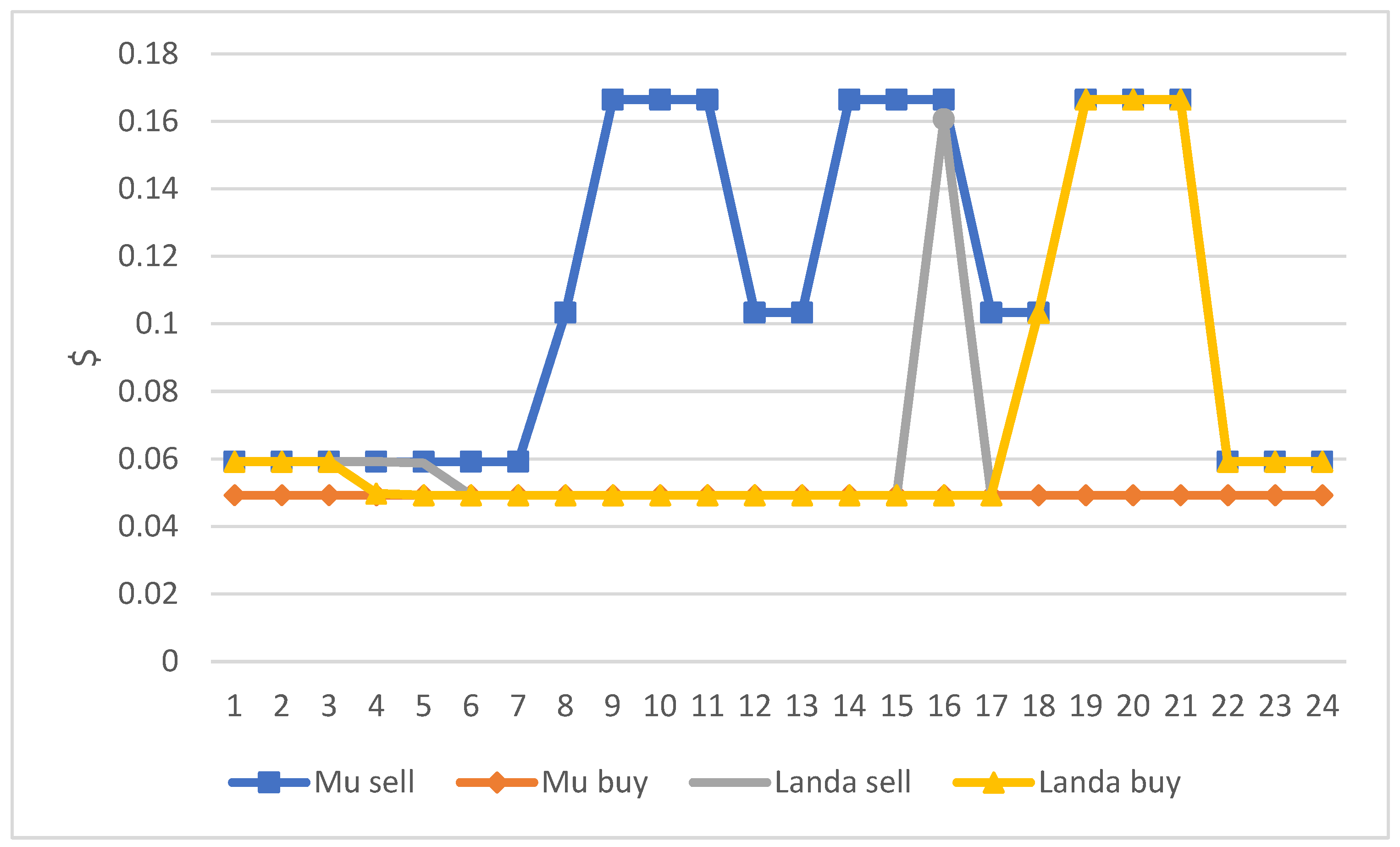
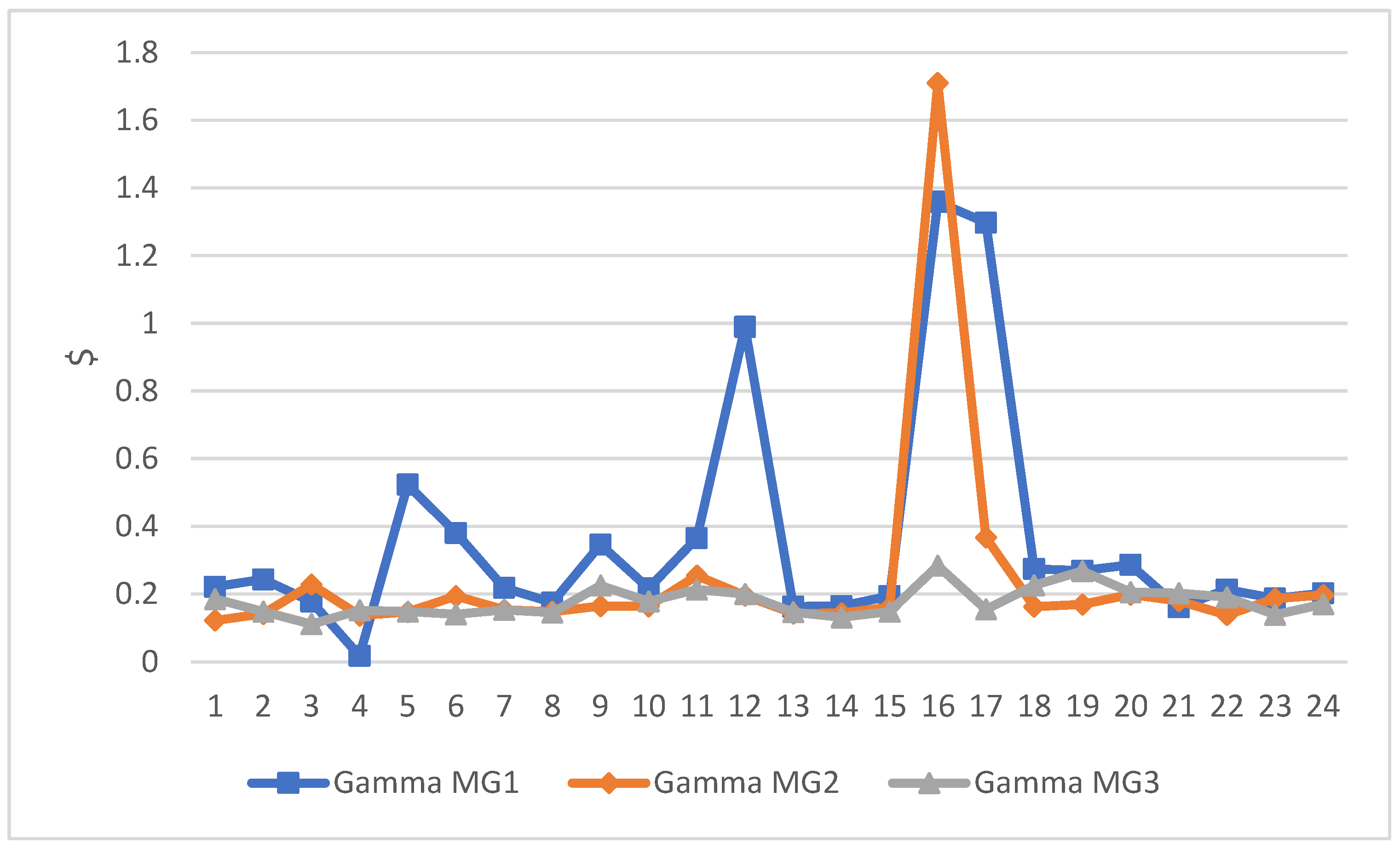
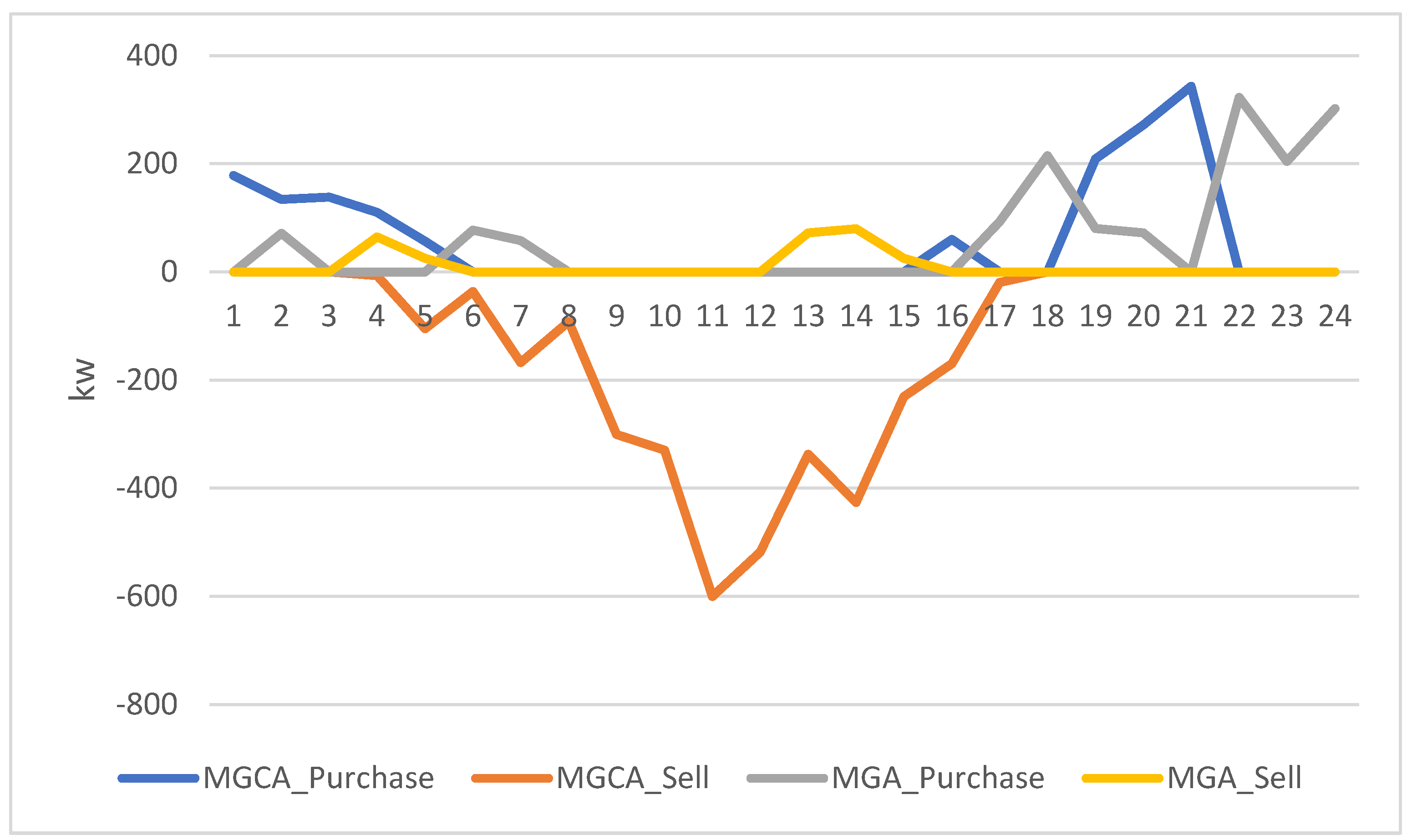
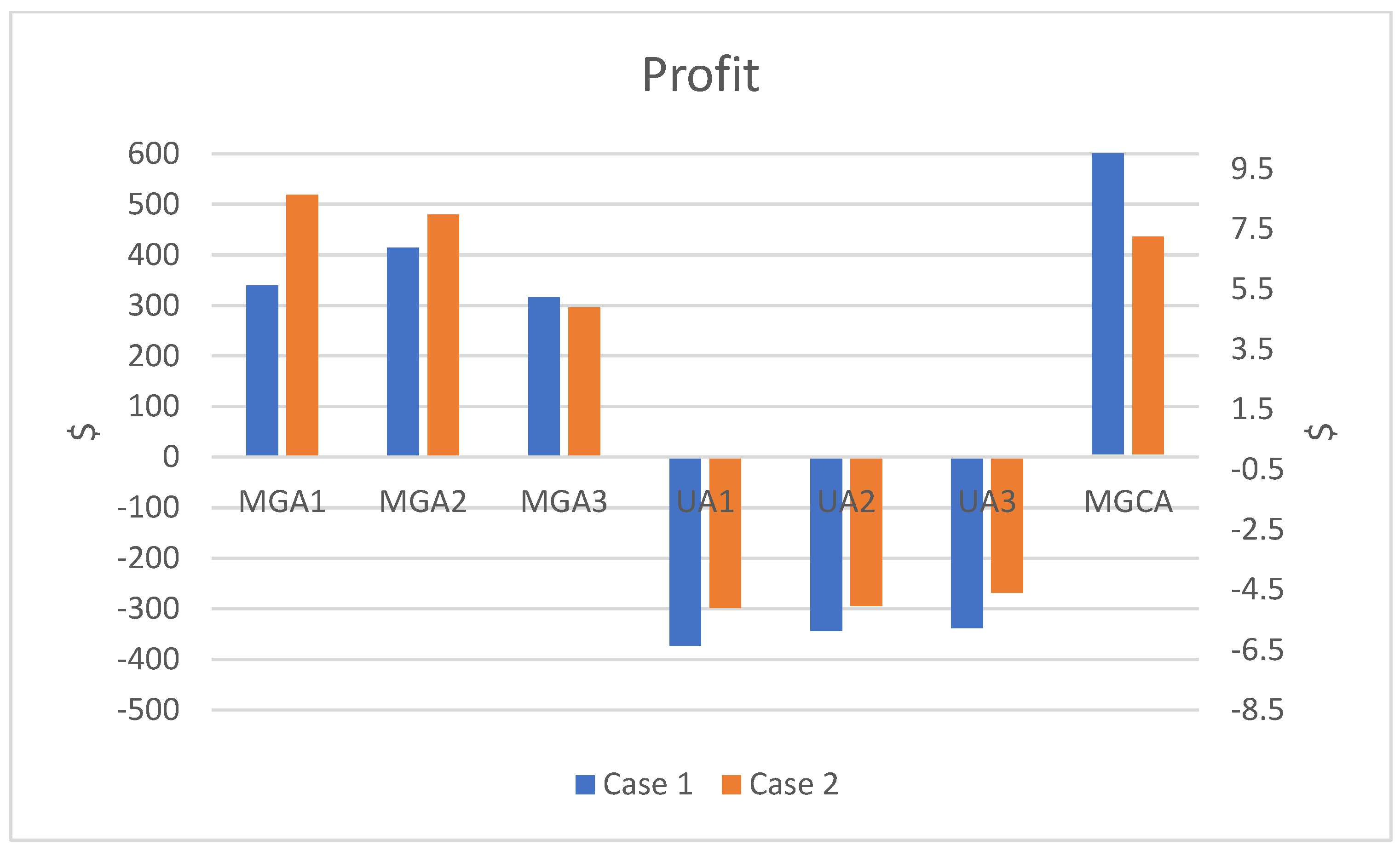
| I | MT | MT | MT | MT | ESS | ESS | ESS | ESS | ESS | ESS | ESS | PV | WT |
|---|---|---|---|---|---|---|---|---|---|---|---|---|---|
| Pmax | Pmin | Rup | Rdown | Pc | Pd | Emax | Smax | Smin | Etac | Etad | Status | Status | |
| MG1 | 80 | 0 | 25 | 25 | 0 | 0 | 0 | 0 | 0 | 0 | 0 | 0 | 1 |
| MG2 | 0 | 0 | 0 | 0 | 80 | 80 | 225 | 0.9 | 0.1 | 0.95 | 0.95 | 1 | 1 |
| MG3 | 0 | 0 | 0 | 0 | 60 | 60 | 200 | 0.9 | 0.1 | 0.95 | 0.95 | 1 | 0 |
| Peak Load in Model 1 (kw) | Peak Load in Model 2 (kw) | |||
|---|---|---|---|---|
| i | Before DR | After DR | Before DR | After DR |
| MG1 | 161 | 170 | 161 | 132 |
| MG2 | 161 | 193 | 161 | 143 |
| MG3 | 161 | 194 | 161 | 139 |
Disclaimer/Publisher’s Note: The statements, opinions and data contained in all publications are solely those of the individual author(s) and contributor(s) and not of MDPI and/or the editor(s). MDPI and/or the editor(s) disclaim responsibility for any injury to people or property resulting from any ideas, methods, instructions or products referred to in the content. |
© 2022 by the authors. Licensee MDPI, Basel, Switzerland. This article is an open access article distributed under the terms and conditions of the Creative Commons Attribution (CC BY) license (https://creativecommons.org/licenses/by/4.0/).
Share and Cite
Zareein, M.; Sahebkar Farkhani, J.; Nikoofard, A.; Amraee, T. Optimizing Energy Management in Microgrids Based on Different Load Types in Smart Buildings. Energies 2023, 16, 73. https://doi.org/10.3390/en16010073
Zareein M, Sahebkar Farkhani J, Nikoofard A, Amraee T. Optimizing Energy Management in Microgrids Based on Different Load Types in Smart Buildings. Energies. 2023; 16(1):73. https://doi.org/10.3390/en16010073
Chicago/Turabian StyleZareein, Mohammad, Jalal Sahebkar Farkhani, Amirhossein Nikoofard, and Turaj Amraee. 2023. "Optimizing Energy Management in Microgrids Based on Different Load Types in Smart Buildings" Energies 16, no. 1: 73. https://doi.org/10.3390/en16010073
APA StyleZareein, M., Sahebkar Farkhani, J., Nikoofard, A., & Amraee, T. (2023). Optimizing Energy Management in Microgrids Based on Different Load Types in Smart Buildings. Energies, 16(1), 73. https://doi.org/10.3390/en16010073






